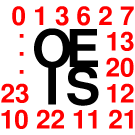Maybe “letting go and letting the Invisible Hand” is more or less guaranteed to result in an allocation that lies at rather than within the production possibility frontier (PPF), but maybe no point on the present PPF represents the best of all possible worlds. Ideally, the road to there will involve some non-market activity on someone’s part. It’s hard to imagine the best of all currently possible worlds not being on the PPF, but that leaves open certain other questions: Does the pursuit of a better-than-currently-possible world necessarily involve pushing outward the envelope that is the PPF, or are there other avenues? I’ll admit that growth as a prerequisite for everything that is good (human rights, poverty alleviation, a smarter humanity, etc.) is a doctrine I find particularly depressing. It almost implies that to be poor is to be part of the problem, or at least precludes the poor from being part of the solution. Contrast this with sustainability principles, steady-state economics and the kind of thinking around “affluenza,” which actually honor the lean life rather than the mean life. This tonal contrast has played a big role in shaping my tribal and ideological allegiances, and is also why I am rooting for the affirmative in the global warming debate.
Maybe the ability of the Invisible Hand to solve the calculation problem is definitively superlative when it comes to local optima, but discovery of non-local (but maybe preferable) attractors can be effected by shocks to the system from other-than-market forces.

Leave a Reply